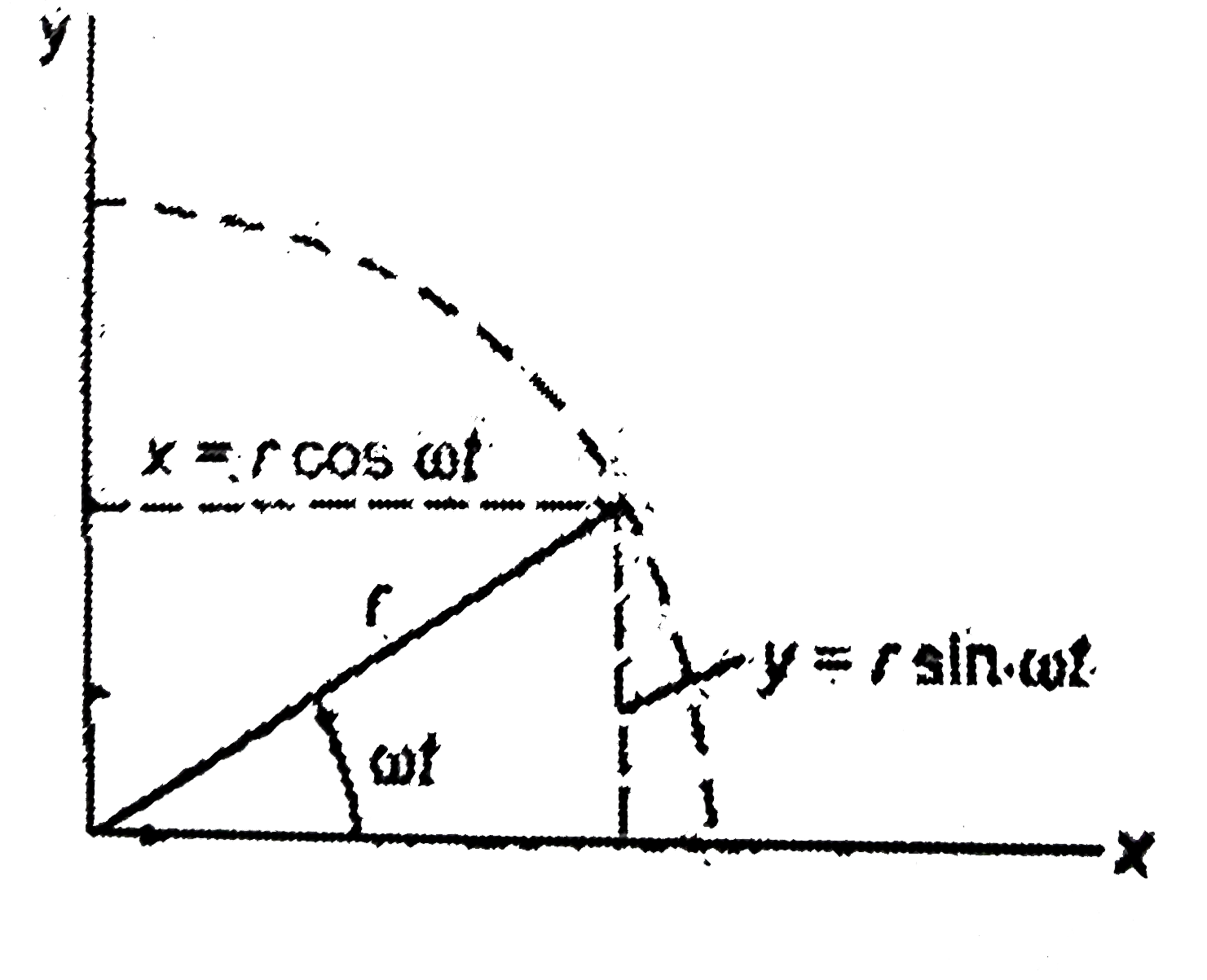The position vector of a particle is →r=acosωti+asinωtj, the velocity of the particle is
parallel to the position vector
perpendicular to the position vector
directed towards the origin
directed away from the origin
The correct Answer is:B
To find the velocity of the particle given its position vector, we can follow these steps:
Step 1: Write down the position vector
The position vector of the particle is given as:
→r=acos(ωt)^i+asin(ωt)^j
Step 2: Differentiate the position vector with respect to time
To find the velocity vector →v, we differentiate the position vector →r with respect to time t:
→v=d→rdt
Step 3: Differentiate each component
Now, we differentiate each component of the position vector:
- For the x-component:
ddt(acos(ωt))=−aωsin(ωt)
- For the y-component:
ddt(asin(ωt))=aωcos(ωt)
Step 4: Combine the differentiated components
Thus, the velocity vector becomes:
→v=−aωsin(ωt)^i+aωcos(ωt)^j
Step 5: Factor out common terms
We can factor out aω:
→v=aω(−sin(ωt)^i+cos(ωt)^j)
Step 6: Analyze the relationship between →v and →r
To determine the relationship between the velocity vector →v and the position vector →r, we can compute the dot product:
→v⋅→r
Step 7: Compute the dot product
The dot product is given by:
→v⋅→r=(aω(−sin(ωt)))(acos(ωt))+(aωcos(ωt))(asin(ωt))
This simplifies to:
=−a2ωsin(ωt)cos(ωt)+a2ωsin(ωt)cos(ωt)=0
Step 8: Conclusion about the relationship
Since the dot product →v⋅→r=0, this indicates that the velocity vector →v is perpendicular to the position vector →r.
Final Answer
The velocity of the particle is:
→v=aω(−sin(ωt)^i+cos(ωt)^j)
And it is perpendicular to the position vector →r.
---
The position vector of the particle is given as:
→r=acos(ωt)^i+asin(ωt)^j
To find the velocity vector →v, we differentiate the position vector →r with respect to time t:
→v=d→rdt
Now, we differentiate each component of the position vector:
- For the x-component:
ddt(acos(ωt))=−aωsin(ωt)
- For the y-component:
ddt(asin(ωt))=aωcos(ωt)
Thus, the velocity vector becomes:
→v=−aωsin(ωt)^i+aωcos(ωt)^j
We can factor out aω:
→v=aω(−sin(ωt)^i+cos(ωt)^j)
To determine the relationship between the velocity vector →v and the position vector →r, we can compute the dot product:
→v⋅→r
The dot product is given by:
→v⋅→r=(aω(−sin(ωt)))(acos(ωt))+(aωcos(ωt))(asin(ωt))
This simplifies to:
=−a2ωsin(ωt)cos(ωt)+a2ωsin(ωt)cos(ωt)=0
Since the dot product →v⋅→r=0, this indicates that the velocity vector →v is perpendicular to the position vector →r.
The velocity of the particle is:
→v=aω(−sin(ωt)^i+cos(ωt)^j)
And it is perpendicular to the position vector →r.
Topper's Solved these Questions
Similar Questions
The position vector of a particle is given by →r=kcosωˆi+ksinωˆj=xˆi+yˆj, where k and ω are constants and t time. Find the angle between the position vector and the velocity vector. Also determine the trajectory of the particle.
View SolutionA particle move so that its position verctor varies with time as →r=Acosωtˆi+Asinωtˆj. Find the
a. initial velocity of the particle,
b. angle between the position vector and velocity of the particle at any time, and
c. speed at any instant.
View Solution
Knowledge Check
The position vector of a particle is r=asinωtˆi+acosωtˆj
The velocity of the particle isAparallel to position vecorBperpendicular to position vectorCdirected towards originDdirected awa from the originThe motion of a particle is given by
y=asinωt+bsinωt
The motion of the particle isAnot a S.H.M.BS.H.M. with amplitude (a + b)CS.H.M. with amplitude (a+b)/2,DS.H.M with amplitude √a2+b2The motion of a particle is given by x=Asinωt+Bosωt. The motion of the particle is
Anot simple harmonicBsimple harmonic with amplitude A+BCsimple harmonic with amplitude (A+B2)Dsimple harmonic with amplitude √A2+B2
The motion of a particle is given by x=Asinωt+Bcosωt. The motion of the particle is
View SolutionPosition of a particle varies as y=cos2ωt−sin2ωt. It is
View SolutionConsider a particle moving in the x−y plane according to r=r(cosωtˆi+sinωtˆj), where r and ω are constants. Find the trajectory, the velocity, and the acceleration.

View SolutionA particle moves so that its position vector varies with time as →r=Acosωtˆi+Asinωthai(j). The initial velocity of the particel the particle is
View SolutionThe position vector of a particle is →r=(3ˆi+4ˆj) metre and its angular velocity →ω=(ˆj+2ˆk)rads−1 then its linear velocity is ( in ms−1)
View Solution
